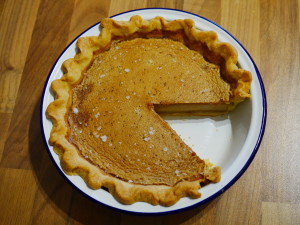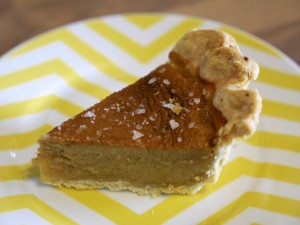Salted Honey Pie
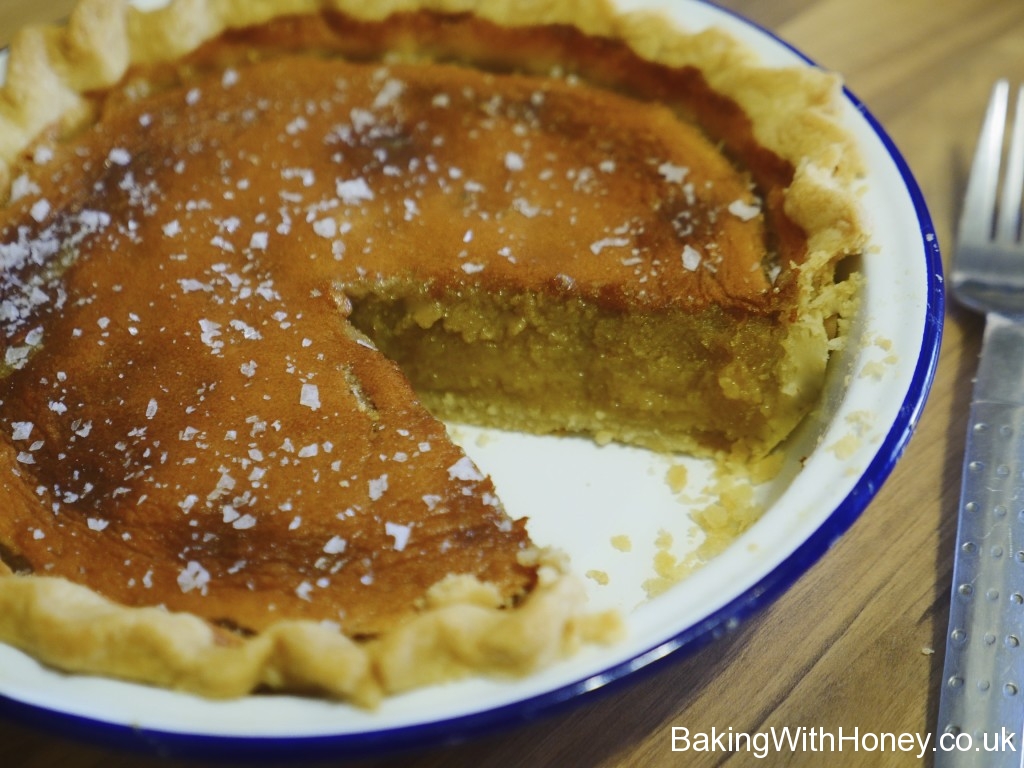
I know it might seem I’ve gone a bit pie crazy lately; but honestly, in this melting London summer heat, I can’t think of anything I want more (let’s ignore ice-cream for a moment here) than a slice of chilled pie. Especially when it’s drenched in fridge-cold cream. If you haven’t made (or even heard of) salted honey pie yet, I am reasonably confident it’s only a matter of time before you’ll see salted honey concoctions everywhere – the new salted caramel? – so this pie is a great place to start!
This old-fashioned sweet pie has secured cult status among on-trend New Yorkers, and is one of the most popular pies sold at Brooklyn’s Four & Twenty Blackbirds Bakery. The original recipe is widely available online, but I was champing at the bit to create my own version. Really, it’s the simplest kind of ‘custard’ type pie – a plain shortcrust case filled with a sweet mix including eggs, butter, sugar (and in this case, honey). The distinctive, pleasantly grainy addition of cornmeal, plus either a drop of vinegar (or buttermilk) further defines it as a Chess Pie; a name given for reasons nobody seems to know exactly, but widely used, particularly in the southern states. If I had to liken salted honey pie to something in particular, to give you a better idea, I would say pumpkin pie, the ubiquitous Thanksgiving table stalwart. The colour and texture are very similar. Both taste better cold the next day. Both benefit from a dollop of softly whipped cream. Oddly, I don’t care much for pumpkin pie. But salted honey pie? More, please.
For the pie crust: You will need approximately 340g of plain shortcrust pastry, either shop bought or you can easily make your own, see my step-by-step guide to shortcrust here.
Line an 8″ – 9″ pie dish and keep chilled in the fridge until you are ready to pour in the filling. You don’t need to blind bake for this recipe.
For the filling:
150g honey (the best strong, dark honey you can find)
150g soft light brown sugar
55g unsalted butter, cubed
3 large eggs (US extra large)
85ml buttermilk
3 tbsp cornmeal (fine polenta)
1/2 tsp natural vanilla extract
1/2 tsp cinnamon
3/4 tsp sea salt
(Plus extra pinches of sea salt flakes, for sprinkling)
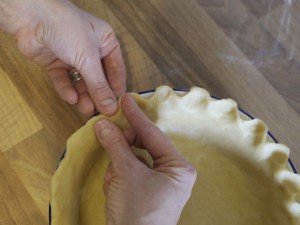
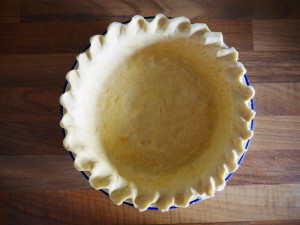
Line your pie dish (or tart tin if you prefer) and keep chilled in the fridge until you need it. This also helps to stop the pastry shrinking too much. I pinched the edges first to give it a pretty, vintage feel – it is much easier to learn how it’s done by looking at pictures rather than trying to explain it! Just press your thumb into the edge of the pastry, and at the same time use your other thumb and forefinger to mould the pastry. It’s a quick movement; once you’ve got the hang of it, you’ll have the whole pie done within seconds.
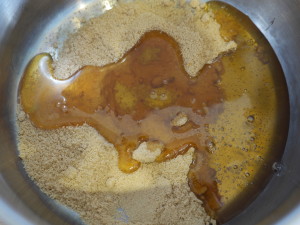
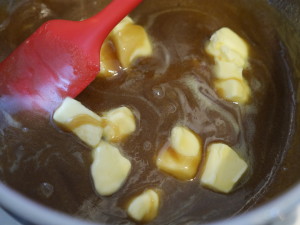
Preheat the oven to 190c/350f/gas mark 4. In a heavy-bottomed saucepan, slowly melt together the honey and sugar on a low heat. Stir now and again. When the mixture is ready, remove from the heat and add the cubes of butter. Keep stirring until the butter has melted – the heat of the mixture will do the job, and the cold butter also helps to speed up the cooling process a little. Set aside.
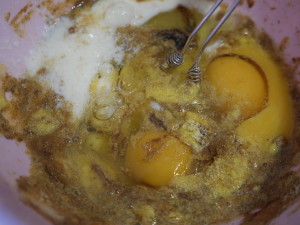
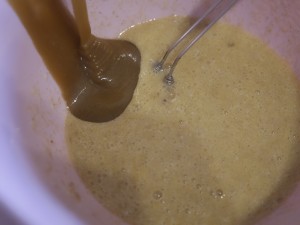
In a separate bowl, whisk together all of the other ingredients – the eggs, buttermilk, cornmeal, vanilla, cinnamon and sea salt. Mix for a couple of minutes until thoroughly combined. I used a little hand whisk for this, but you can use a stand mixer with a ballon whisk if you like. When it is ready, very slowly trickle the warm honey mix into the bowl, whisking as you go. Adding it slowly avoids scrambling the eggs!
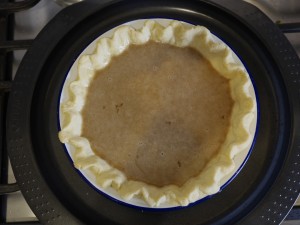
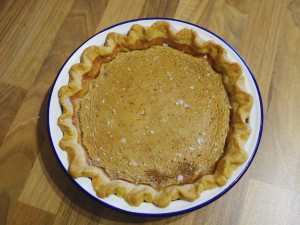
When it is completely mixed, quickly pour it into your waiting pie case. Bake in a preheated oven for around 40 minutes (check after 35). The top of the pie will be pleasingly dark and should look ‘set’, but with a bit of a wobble. If you give the tin a nudge and the centre is quite clearly liquidy, return to the oven. You needn’t be overcautious though. Don’t overbake it – remember it will firm up as it cools! Sprinkle a pinch or two of sea salt flakes when you remove the pie from the oven. When the pie is completely cool (and it might look a bit wrinkled – totally normal), store it the fridge. It is best chilled overnight, or at least several hours, before slicing and serving with cream or ice-cream. It will keep for several days if kept refrigerated, preferably wrapped in clingfilm or in an airtight tub.
